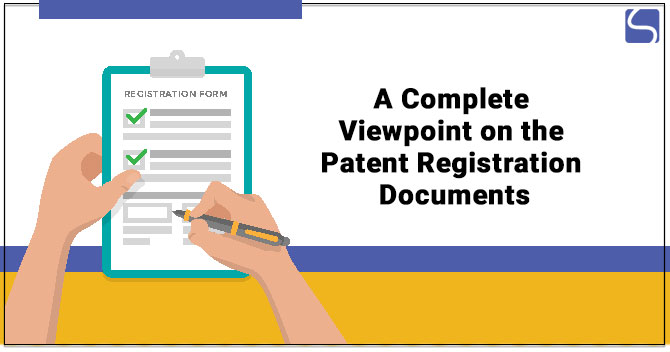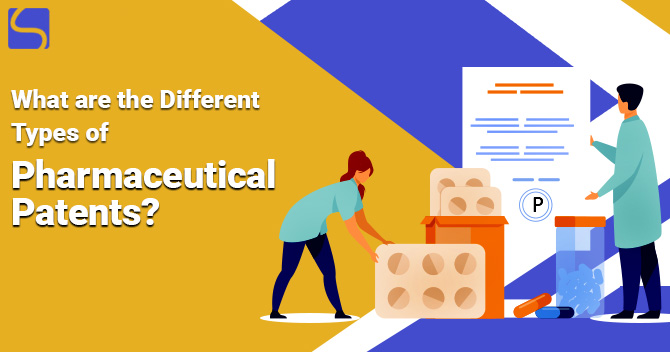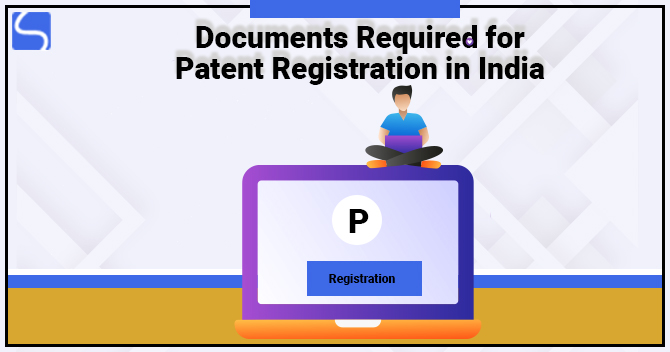A Complete Viewpoint on the Patent Registration Documents

Karan Singh | Updated: Jun 18, 2021 | Category: Patent
A Patent is a vital part of the IPR (Intellectual Property Right) that provides exclusive rights to the proprietor to sue anyone who allegedly counterfeited the invention for financial benefits. It initially refers to lawful documents that prove that a certain invention is under Patent protection. The word Patent protection means that the invention cannot be used, sold or distributed by others for commercial purposes. In this blog, we will talk regarding the Patent Registration Documents that the applicant has to arrange at the time of the process of Patent Registration. To get a Patent, the applicant has to apply for the registration to the Patent Office along with an extended list of Patent Registration documents. It is essential for the candidate to fulfil all the compliances under the Patent Act to get the Patent Registration Certificate.
Table of Contents
Patent Registration Documents – Overview
Following are some vital Patent Registration Documents that must be arranged at the time of Patent Registration:
- Patent application form concerning the grant of Patent in India;
- Submit a copy of the full Patent specification, and in case it is already provided, it must be followed by the full Patent specification within twelve months;
- Patent technical drawing, if needed;
- A copy of the document highlighting the theoretical explanation of an invention along with the required information;
- A copy showing the information related number, present status & filing date of each foreign Patent application (Form 3);
- The priority document as managed by the controller, if the priority date is claimed already in the convention application;
- Undertaking regarding the inventorship in the case of PCT national phase or convention application (Form 5) or if the provisional specification is duly followed by a full specification;
- An actual copy of the Power of Attorney if the Patent agent is handling the application requisites;
- Fees concerning the Patent Registration to be paid through DD/cheque/cash.
Details to be encircled in the Patent Registration Documents
At the time of filing up the Patent application, the candidate will come across several forms as mentioned below:
Form 1: Application Concerning the Grant of Patent
This application entails:
- The inventor’s name and address;
- The applicant’s name and address;
- Information equivalent concerning the present invention, which the inventor has filed and few requested undertaking and other information.
Form 2: Complete/Provisional Specification
This form deals with the inventor’s Patent specification. It might be provisional or complete Patent specs based on the type of application the inventor is dealing with.
Form 3: Statement and Undertaking under Section 8
This form is used to enclose details concerning the Patent application filed in any other country for the existing invention.
Form 5: Undertaking Concerning the Inventor-ship
This application performs as a declaration form for the inventors of the existing Patent for which the application is being filed.
Form 26: Power of Attorney (If an application filed by Patent Agent)
This form is mainly used to assign a Power of Attorney concerning the Patent’s agent. He or she will be accountable for addressing the prerequisites of a Patent application on behalf of the inventor. Since the rejection rate of the Patent application is considerably higher, the applicant is needed to remain spot-on with Patent Registration Documents. Any loopholes might leads to immediate cancellation, and the candidate has to follow the whole process again.
Process of Patent Registration in India

Step 1: Writing Down the Theoretical Features of the Invention
Collect the information concerning the invention like:
- Invention area;
- Description underlining the functionality features of the invention;
- Written document showing the functioning of the invention;
- List of benefits provided by the inventors.
If the inventor has contributed his or her time to the invention at the time of the R&D phase, supremely, it should own a lab record enclosing the signature & date of the inventor.
Step 2: Rendering Graphical or Schematic Illustrations that show the Invention Working in Brief
The diagrams and drawings should represent the work of the inventor thoroughly. These adhere to absolute significance when it comes to filing the Patent application.
Step 3: Examine the Patent Ability of the Invention
As per the Indian Patent Act, every invention doesn’t essentially come under the Patent regime as there are a few exceptions to it. The candidate should conduct a deep search concerning the patentability of the inventions prior to filing.
Step 4: Conduction Patent Capability Search
The next step would be regulating whether the inventions obey the patentability criteria as mentioned under the Patent Act of India.
They are:
- Enabling;
- Originality;
- Industrial Application;
- Non-obviousness.
Step 5: Preparation of Patent Application
The candidate is qualified to file a provisional application if the invention is in the R&D phase. It provides the underneath benefits to the inventor:
- Protects the date of filing;
- The price is considerably low;
- An extended timeline of twelve months for Patent filing the detailed specifications.
Filing the provisional specification is not compulsory for the inventor. But, it does come in useful when it comes to protecting the date of filing or getting relaxation of time when the invention is in the R&D phase.
Step 6: Publication of the Patent Application
After providing the detailed specification and the application of Patent, the Patent application will be published after eighteen months of first filing. In the event of the untimely publication, the Patent application is published within thirty days of the early publication request.
Step 7: Request for Examination
The application of Patent is examined after receiving the request for the examination. The request for examination is usually made in Form 18, also known as an RFE (Request For Evidence). Upon receiving the request, the controller at the Patent Officer forwards the application to the Patent examiner, who examines the application against the criteria as mentioned above.
The Patent examiner arranges an initial report of an examination upon reviewing it for the terms mentioned above; this is called Patent Prosecution. This examination report will submit to the controller, and the report usually encloses prior arts (present Patent Registration Documents prior to the filing date), similar to the claimed invention, and the same is reported to the candidate.
Step 8: Opposing the Objections
If any objection is raised or after the release of the report, the inventor will be given a fair chance to confront the objections in the way prescribed in the Indian Patent Act[1].
Step 9: Resolving the Objections
As the inventor succeeds in resolving the objection, the boards’ concerned member stamp their consent on the examination report.
Step 10: Grant of Patent
After fulfilling the patentability necessities, the Patent application gets the approval of the concerned members and the grant if the Patent is informed in the Patent Journal.
Conclusion
Registration of Patent is meant to be filed before the Patent Office occupied with provisional and complete specifications of Patent. The Patent Registration documents have been discussed in brief in this blog. Connect with an expert if you have some worries concerning the same.
Read our article:Let’s Know the Steps to Protect a Patent in India














